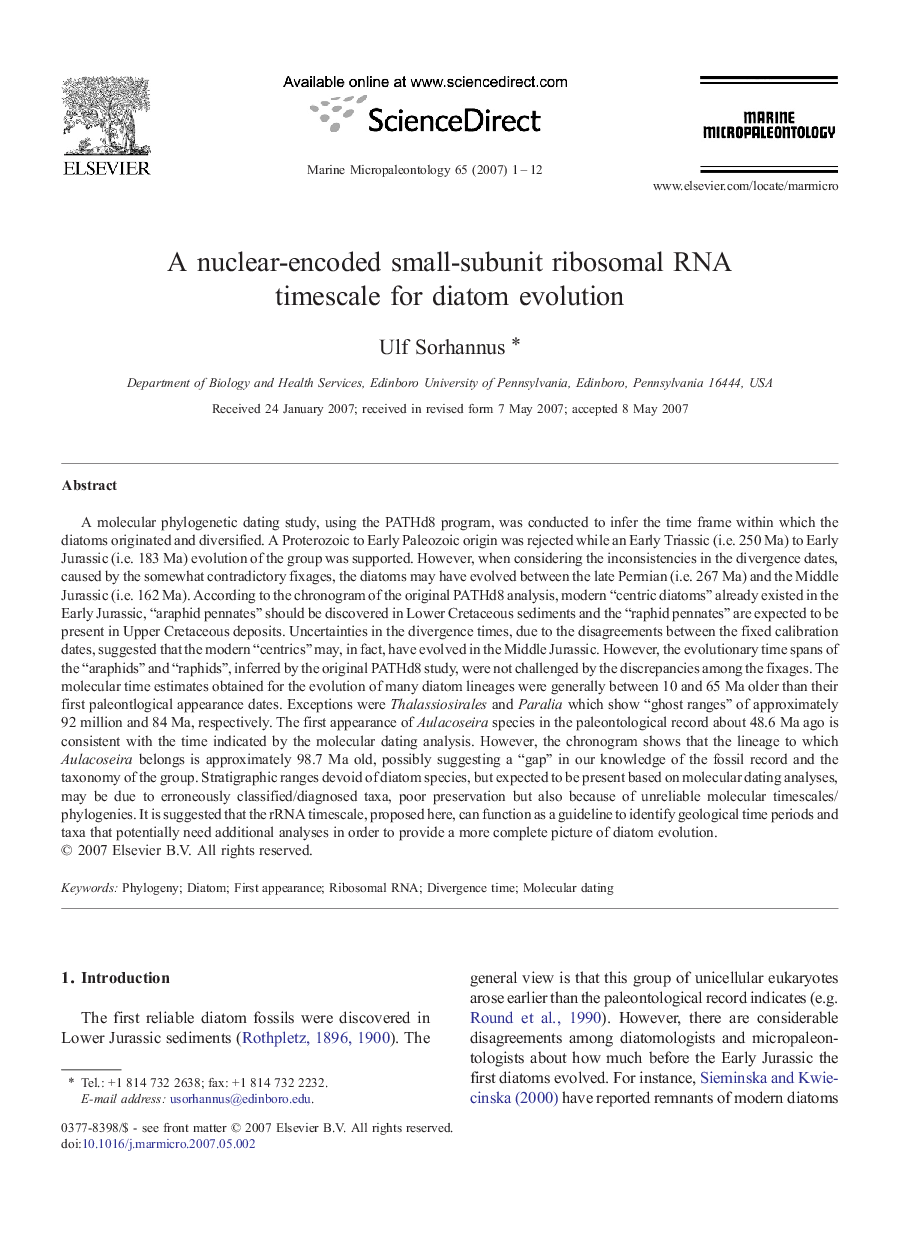| کد مقاله | کد نشریه | سال انتشار | مقاله انگلیسی | نسخه تمام متن |
|---|---|---|---|---|
| 4749369 | 1642226 | 2007 | 12 صفحه PDF | دانلود رایگان |

A molecular phylogenetic dating study, using the PATHd8 program, was conducted to infer the time frame within which the diatoms originated and diversified. A Proterozoic to Early Paleozoic origin was rejected while an Early Triassic (i.e. 250 Ma) to Early Jurassic (i.e. 183 Ma) evolution of the group was supported. However, when considering the inconsistencies in the divergence dates, caused by the somewhat contradictory fixages, the diatoms may have evolved between the late Permian (i.e. 267 Ma) and the Middle Jurassic (i.e. 162 Ma). According to the chronogram of the original PATHd8 analysis, modern “centric diatoms” already existed in the Early Jurassic, “araphid pennates” should be discovered in Lower Cretaceous sediments and the “raphid pennates” are expected to be present in Upper Cretaceous deposits. Uncertainties in the divergence times, due to the disagreements between the fixed calibration dates, suggested that the modern “centrics” may, in fact, have evolved in the Middle Jurassic. However, the evolutionary time spans of the “araphids” and “raphids”, inferred by the original PATHd8 study, were not challenged by the discrepancies among the fixages. The molecular time estimates obtained for the evolution of many diatom lineages were generally between 10 and 65 Ma older than their first paleontlogical appearance dates. Exceptions were Thalassiosirales and Paralia which show “ghost ranges” of approximately 92 million and 84 Ma, respectively. The first appearance of Aulacoseira species in the paleontological record about 48.6 Ma ago is consistent with the time indicated by the molecular dating analysis. However, the chronogram shows that the lineage to which Aulacoseira belongs is approximately 98.7 Ma old, possibly suggesting a “gap” in our knowledge of the fossil record and the taxonomy of the group. Stratigraphic ranges devoid of diatom species, but expected to be present based on molecular dating analyses, may be due to erroneously classified/diagnosed taxa, poor preservation but also because of unreliable molecular timescales/phylogenies. It is suggested that the rRNA timescale, proposed here, can function as a guideline to identify geological time periods and taxa that potentially need additional analyses in order to provide a more complete picture of diatom evolution.
Journal: Marine Micropaleontology - Volume 65, Issues 1–2, 29 October 2007, Pages 1–12